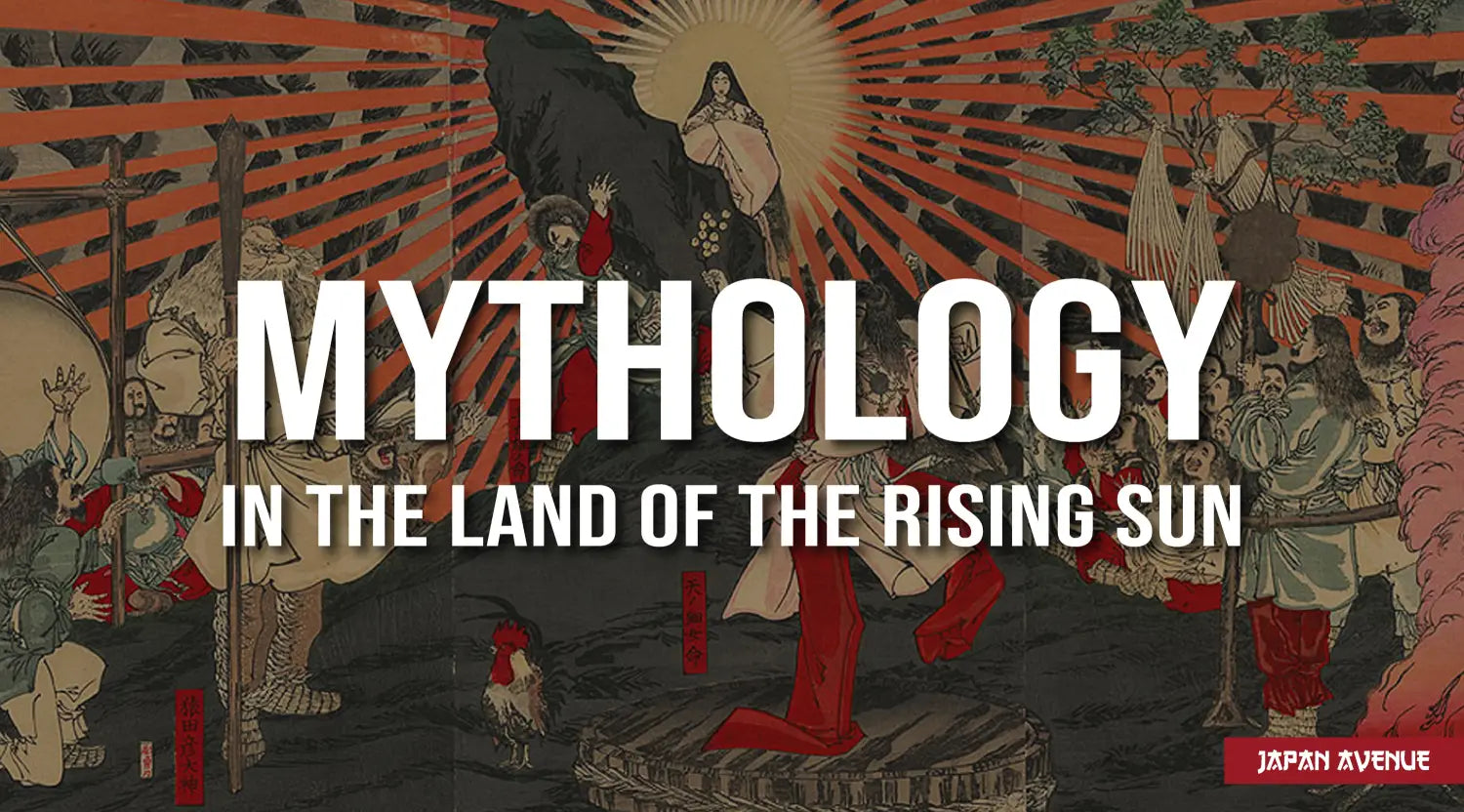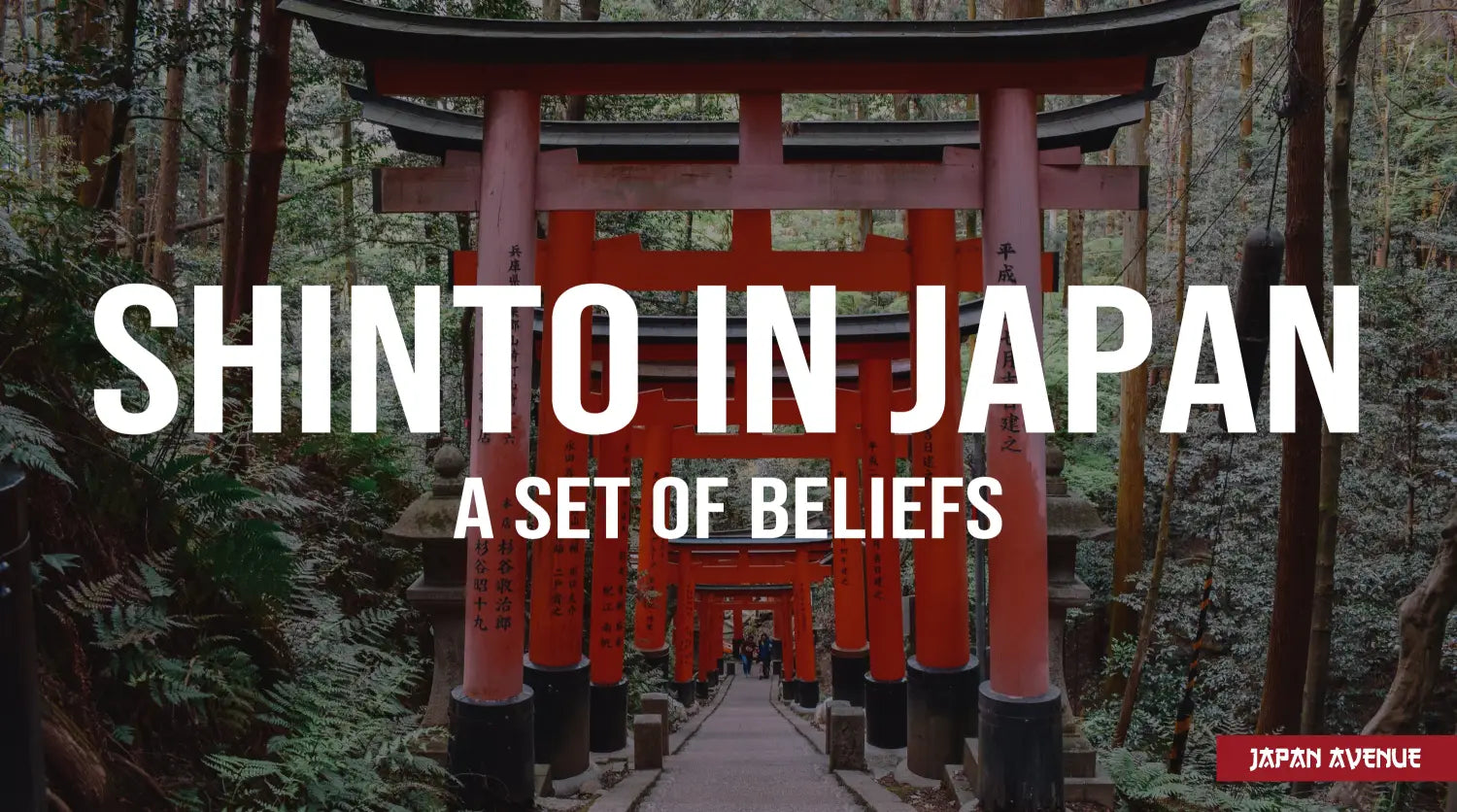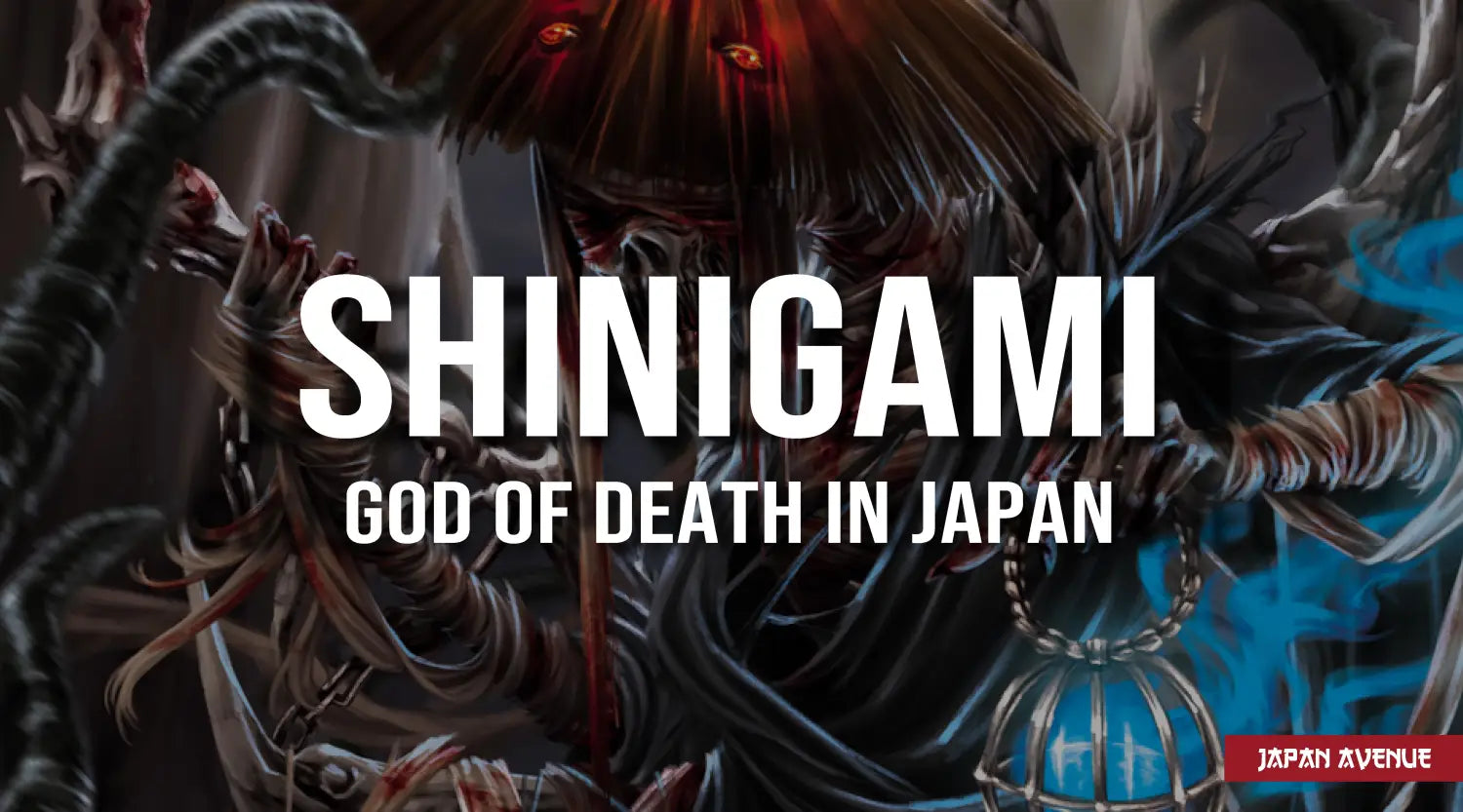Japanese mythology is among the most fascinating in the world, with its extraordinary stories and mysterious creatures.
It is the set of beliefs and myths about the deities that belong to the Japanese people. Originating from the Shinto religion, Japanese mythology has its roots in the Kojiki, a collection of ancestral myths and the oldest written text in the Japanese language. In the archipelago, legends are full of kami, symbolic animals and yokai.
Let's have a closer look at what these fantastic creatures of Japanese folklore, so much revered in the Land of the Rising Sun, look like.
📿 Religion in Japan
Many myths originate from religion, in all cultures throughout the world. Japan, a land of traditions, is no exception. To better understand the influence of religions in Japanese popular beliefs and folklore, let's take a closer look at the two main ones.
⛩ Shintoism, the original religion of Japan
 Not surprisingly, Japanese mythology is strongly linked to Shintoism. It is the oldest Japanese religion and the most practiced one today along with Buddhism. This religion is based on the worship of kami (deities) and the sacredness of nature. Its animistic beliefs have largely influenced the Japanese civilization. Thus, the Japanese believe in the spirits that animate natural elements and objects. Its founding stories can be found in the Kojiki and the Nihon shoki, two reference works that inspired the Shinto religion and many beliefs within the archipelago. These include the mythological stories of the creation of the islands, the origin of the kami and the history of Japan.
Not surprisingly, Japanese mythology is strongly linked to Shintoism. It is the oldest Japanese religion and the most practiced one today along with Buddhism. This religion is based on the worship of kami (deities) and the sacredness of nature. Its animistic beliefs have largely influenced the Japanese civilization. Thus, the Japanese believe in the spirits that animate natural elements and objects. Its founding stories can be found in the Kojiki and the Nihon shoki, two reference works that inspired the Shinto religion and many beliefs within the archipelago. These include the mythological stories of the creation of the islands, the origin of the kami and the history of Japan.
🧘 And Buddhism?

Like Shintoism, Buddhism has also influenced the tales and legends of Japan. Among the reference texts, we can mention the Shintoshu and its Buddhist approach to Japanese mythology. This religion arrived in the archipelago around the 6th century, being imported from China and Korea. Its philosophy and meditative practices were quickly adopted by the Japanese. Just like Shinto shrines, many Buddhist temples have been built in the country.
Moreover, the two religions are quite complementary for the Japanese people, who often practice them simultaneously at different stages of their lives. While Shintoism worships kami and nature, Buddhism seeks enlightenment. Life events are celebrated in Shinto shrines while funerals are held in Buddhist temples. On the other hand, while the deceased watch over their ancestors in the Shinto religion, Buddhists believe in reincarnation.
➡ Learn how religions in Japan have instilled the traditional values and beliefs of Japanese culture.
🌪 The kami, gods and goddesses of Japan

Like Greek mythology, Japanese mythology has its own gods, monsters and supernatural beings. There exist 8 million kami in the Land of the Rising Sun, however, some are more known than others. In addition, the most important deities are worshipped in Shinto shrines and some Buddhist temples.
🐣 The birth of Japan

The most popular story in the Kojiki is that of the creation of the islands of the Japanese archipelago. Originally, the world was filled with chaos... But that was before Izanagi and Izanami, the first couple of kami, were given the mission of creating the Earth. The two gods were standing on a floating bridge between heaven and sea when Izanagi dipped a divine spear into the water, causing it to splash. The drops that were formed gave birth to the first Japanese island. Later, the other lands of the archipelago, as well as many kami were created by this demigod couple.
🌬 The main kami - Japanese deities

Whether they are creators, celestial or even earthly, numerous kami populate the universe. Some are particularly venerated in the land of the rising sun. They even have their own matsuri (festivals).
After the famous demiurge couple Izanagi and Izanami, it is now the turn of the sun goddess Amaterasu. In addition to illuminating Japan, she is also the ancestor of the entire imperial lineage. We can also mention Amaterasu's brothers: Tsukuyomi, deity of the moon and the night, and Susanoo, god of the storm and the sea, known for his frightening impulsiveness.
Among the most important kami of the archipelago, Inari, the deity of rice and fertility is particularly appreciated in Japan. Similarly, the god of war Hachiman, embodied by a pigeon (or a dove) is praised in numerous shrines in Japan.
🎎 Kamis and the imperial family

In Japan, powerful clan leaders and emperors may become kami after their death. According to a legend, the emperor is a descendant of the goddess Amaterasu, which is why he is sometimes considered a living god in Japan.
Moreover, the Kojiki and the Nihon shoki explain the divine connection of the imperial lineage through the story of Nigiri, Amaterasu's grandson who came to Earth and his heir Emperor Jinmu. The objects that the sun goddess gave to Nigiri became the three sacred treasures of the country: a sword, a mirror and a heavenly jewel. In 1946, the constitution attests the absence of a divine status of the emperor. Yet in the Shinto religion, he still represents the way of the gods.
➡ Learn more about the kami and their legends.

Amaterasu. Credits: SpiritAJ on DeviantArt.com
👺 Japanese folklore
Mythology has strongly inspired folklore in Japan with a whole range of supernatural creatures, strange animals and kami. During festivals, the streets are filled with yokai and mysterious animals.
🍃 The yokai, supernatural spirits

Similar to goblins, vampires, mermaids and fairies, yokai are the invisible creatures that populate the world in Japanese mythology. They are small mischievous monsters, ghosts or demons that are often represented in traditional Japanese art and more recently in manga and japanime.
These supernatural spirits originate from Shinto and Buddhist religion as well as from Chinese and foreign tales. Whether they are Oni demons, Tengu demons, terrifying yurei (ghosts) or legendary monsters, each spirit has its own fascinating story.
➡ Discover the captivating world of Japanese yokai.
🦊 The strong symbolism of animals in Japan

Animals are not missing in Japanese folklore. Similar to our unicorns, werewolves, centaurs and other griffins, Japanese tales are full of dragons, Kitsune (polymorphous foxes) and Bakeneko (evil cats) with extraordinary powers. In addition to the imaginary animals, Japanese people are particularly fond of cats, bears and koi fish which have a strong spiritual value. Each animal has its own unique character and specialties.
➡ Discover the symbolism of Japanese animals.
The origins of Japanese culture can be traced through Japanese mythology. The one that has its roots in the Shinto religion and where the ancestral myths continue to amaze us with its poetic legends explaining the origin of the world.
Beyond the intriguing stories and tales that entertain children, each mythological character conveys a message and specific values related to the Japanese civilization.



